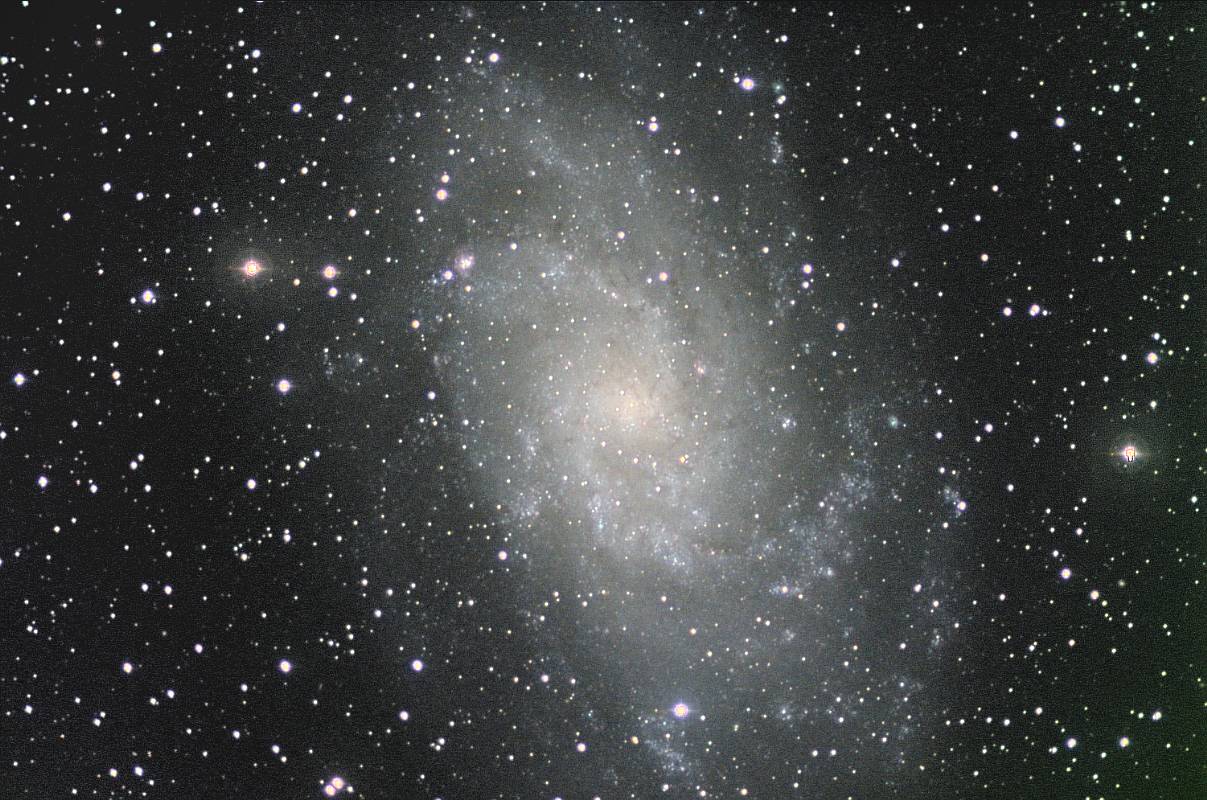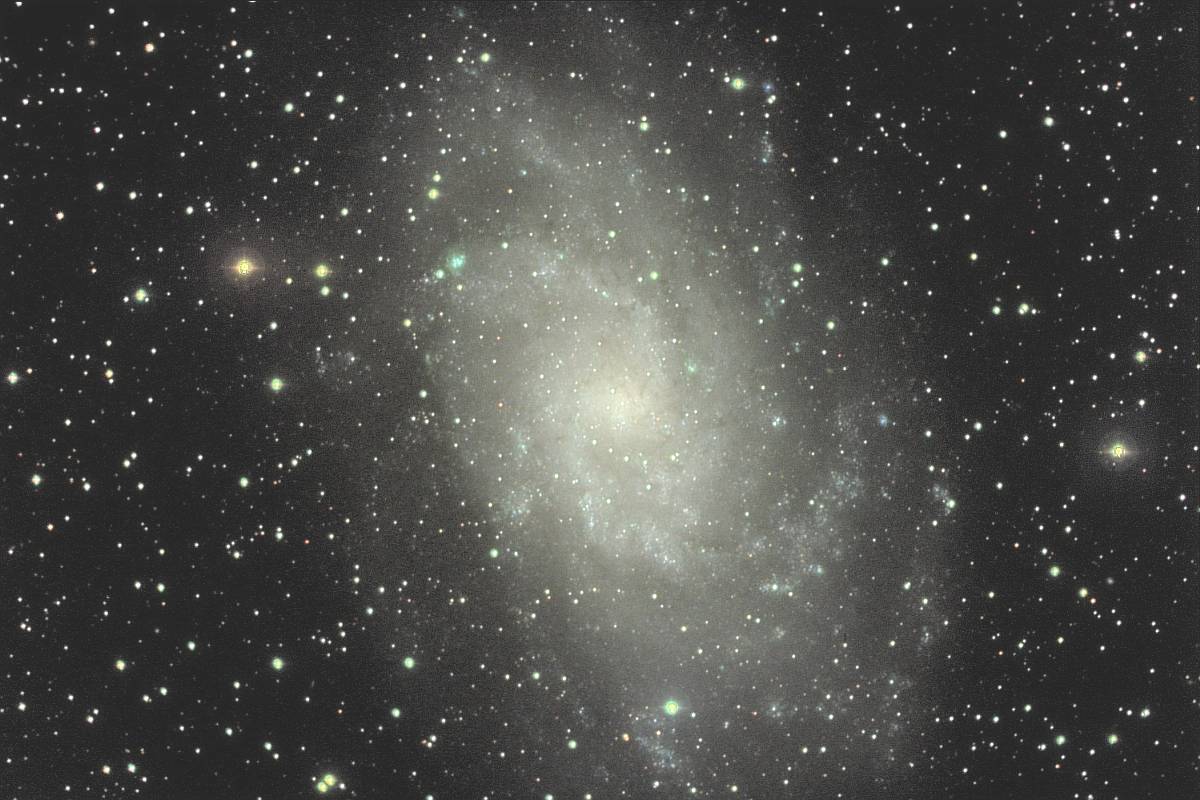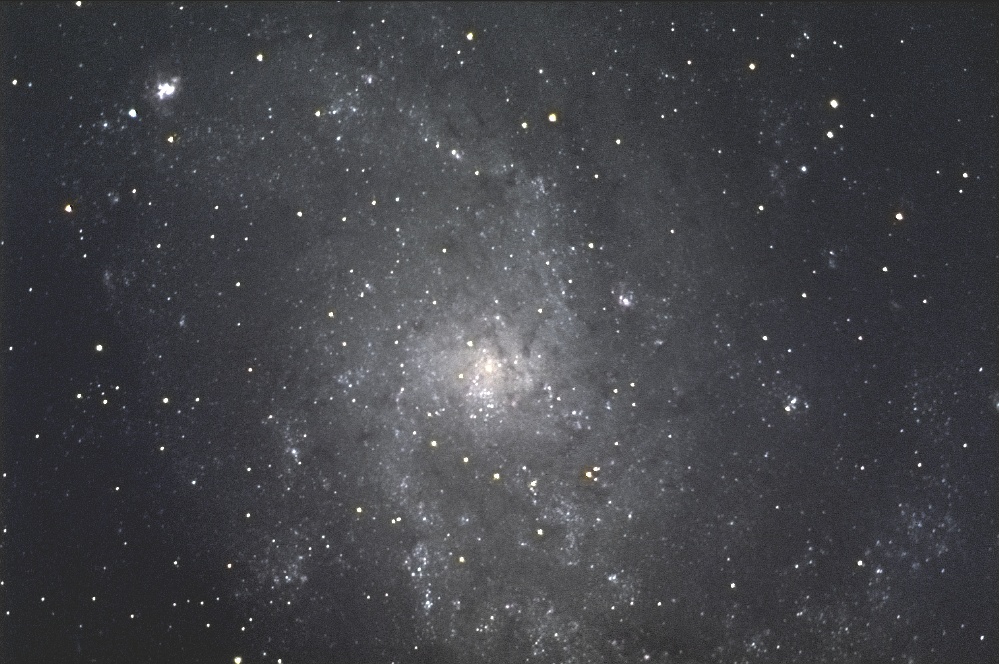
M33 is a close-by spiral galaxy oriented face-on to us. It's the
second-largest galaxy in the sky, in terms of angular size (Andromeda
Galaxy is the largest). Because it spans 1 degree in maximum extent
large telescopes can image only small portions at a time, and must use
mosaics to show the entire galaxy. Therefore this object is suitable
for small telescopes, with short focal lengths, that can fit the entire
galaxy in a single image's FOV.

Figure 1. M33, FOV = 64 x 43 'arc. LBVR exposure times 13, 33, 9 & 7 min. [Meade LX200GPS, prime
focus, Starizona HyperStar, SBIG ST-8XE CCD, 2007.01.09, Hereford Arizona Observatory]
Since a photometric B-filter passes such a small amount of light
compared to the other filters it is necessary to expose B-filter images
longer than the others. In the above image a total exposure time of 33
minutes was used (140 15-second exposures). It's possible to create
what appears like a color image using VRI filters instead of BVR
filters, thus reducing total observing time. This is illustrated in the
next image.

Figure 2. M33, FOV = 64 x 43 'arc. False color LVRI; exposure times 13, 9, 7 & 7 min. [Meade LX200GPS, prime
focus, Starizona HyperStar, SBIG ST-8XE CCD, 2007.01.09, Hereford Arizona Observatory]
Comparing the two images shows that some regions that appear green in the LVRI image are actually red (as in the LBVR image).
All exposures were short, being 10 seconds for L, V, R aNnd I; for B
they were 15 seconds. Longer exposures would have produced greater
blooming streaks for bright stars. The MaxIm DL anti-blooming feature
was used for L and R images (and two stars required additional editing).
The previous two images were made with at prime focus using a
Starizona HyperStar field flattening lens. The plate scale was 2.58
"arc/pixel. The sharpest images had FWHM = 4.5 "arc (1.74 pixels). This
sharpness is close to the theoretical limit. The next image was made
with a Cassegrain configuration having a plate scale of 1.09 "arc/pixel.

Figure 3. M33 central region, FOV = 27.5 x 18.3 'arc. LRGB made without a
B-filter. A B-band image was obtained by subtracting a blue-blocking
filter image from a clear-filter image. Since the blue-blocking filter
passes 86% as much light as the clear filter it was possible to use the
image stabilizer (ABIG AO-7 tip/tilt) for long exposures, whereas with
a B-filter (passing only ~7% as much light as a clear filter) there
frequently is not a bright enough star on the autoguider chip to permit
image stabilization or even autoguiding. Exposure times for C, R, V and
the blue-blocking filter were 45 min, 9 min, 10 min and 10 min. [Meade LX200GPS, Cassegrain, x0.6 focal reducer, SBIG ST-8XE CCD, 2007.01.04, Hereford Arizona Observatory]
The greater detail in the Cassegrain image is apparent, but the sky
area shown is <20% of that for the prime focus images. A mosaic
could be produced from small FOV images to equal the large FOV, but it
would require about 6 times as many images and more work.
____________________________________________________________________
This site opened: January 04, 2007. Last Update: January 09, 2007